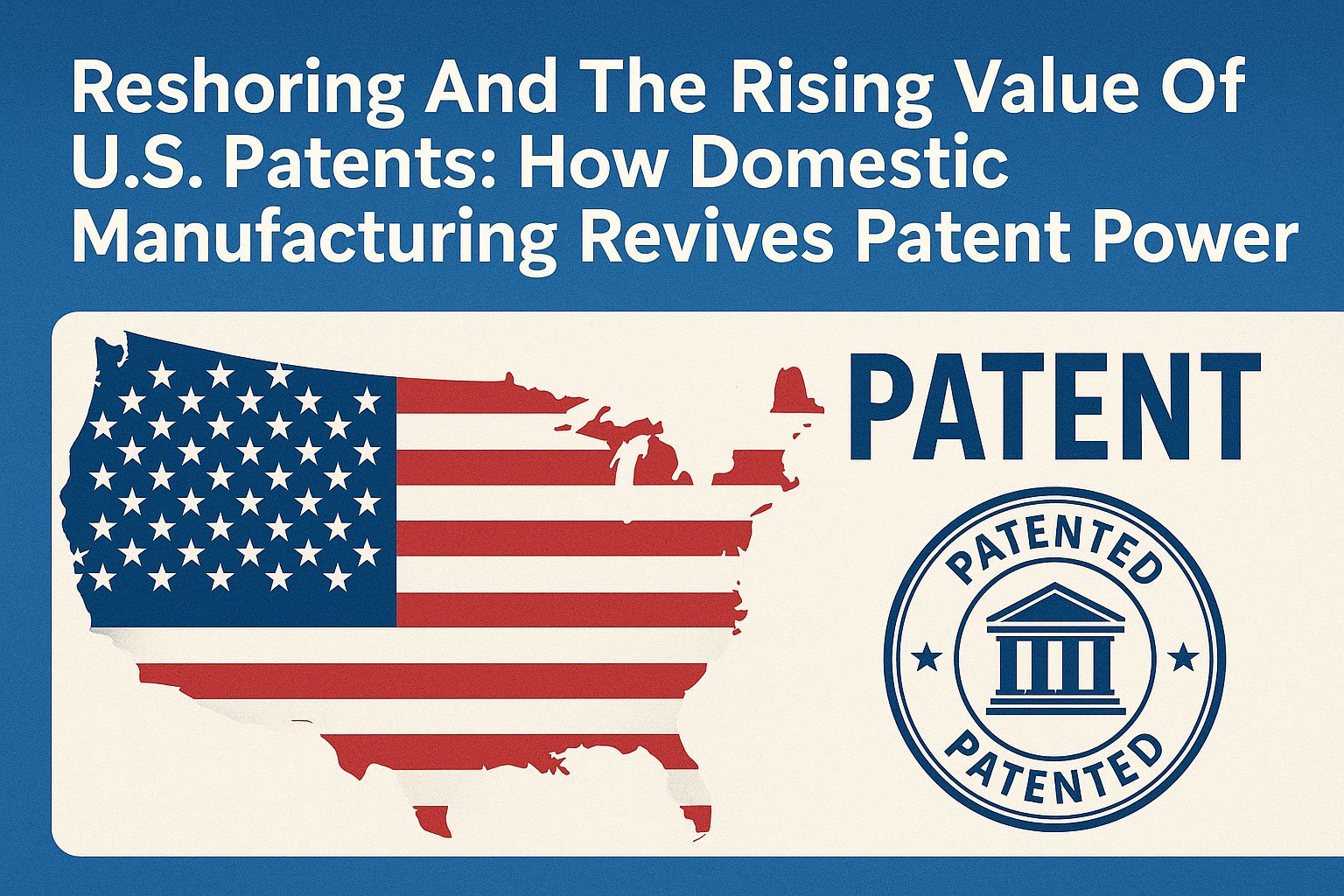Reshoring And The Rising Value Of U.S. Patents: How Domestic Manufacturing Revives Patent Power
Written by Ben Esplin
One of the focuses of the second Trump Administration has been incentivizing a restoration of U.S. manufacturing through, among other policies, reciprocal tariffs, direct subsidies, tax benefits for investment in manufacturing infrastructure, and reduced regulation for building and running factories. While it is still early days IN this effort, there is evidence suggesting the “reshoring” of manufacturing the U.S. is underway, and we can assume these efforts will be sustained for the next few years, at least. One thing is certain, if reshoring is successful and manufacturing returns to the U.S. in force, there will be significant implications for the value of U.S. patents.
While a U.S. patent grants a patent holder a time-limited monopoly, that monopoly is effectively limited (with small exception) to activities conducted in the U.S. For the past several decades, this limitation has diminished the value of U.S. patents directed toward manufacturing infrastructure. The value of U.S. patents protecting innovations related to manufacturing automation (e.g., in robotics, artificial intelligence, etc.), manufacturing safety systems, source materials, and manufacturing techniques (e.g., additive manufacturing, etc.) have been depressed by a dearth of potential infringers (i.e., manufacturers) physically located in the U.S. A resurgence of American manufacturing will greatly expand the value of a U.S. patent monopoly on these kinds of innovations simply because the volume of potentially infringing activity will be expanded, in terms of dollars and/or any other relevant metric.
Another expansion of the value of U.S. patents will be driven by potential infringers having a physical presence in America. Previously, companies that manufacture outside the jurisdiction of U.S. courts (e.g., in Asia) posed a significant problem for owners of U.S. design and utility patents directed to specific consumer products. This is because potentially infringing goods (read: knock offs) could be imported to the U.S. by a variety of different corporate entities acting as importers and/or distributors. If a patent holder attempted to bring an infringement claim against one of these importers or distributors, a new one would suddenly spring to life to sell the offending products. The resulting game of whack-a-mole often made enforcement of U.S. patents on relatively inexpensive consumer products complicated, expensive, and marginally effective. By contrast, enforcing a patent against a potentially infringing U.S. manufacturer, rather than just a distributor/importer, would be far simpler and a judgment against the manufacturer would actually have teeth.
The return of American manufacturing will not only create jobs worth having, which is inarguably the first priority of this effort, but will enhance the value of U.S. patents as well. We are already advising clients on this shift, and how they can take advantage of it. If you would like a consultation on how your company can use patents to further gain an advantage over the competition as reshoring gets underway, please reach out to us.

